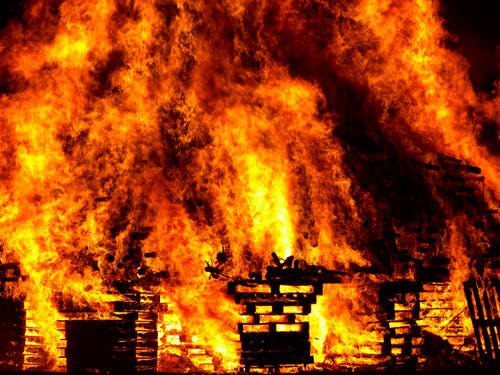Imagine this: the cozy aroma of a winter fire crackling in the fireplace, the backyard BBQ filling the air with smoky goodness, or perhaps a nearby wildfire that casts a shadow over your neighborhood. These scenarios, while seemingly innocent or beyond your control, can have lasting effects on your home. So, let’s look into the long-term effects of smoke and soot on your living space.
What Are Smoke and Soot?
Before we delve into the long-term impacts, it’s important to understand what smoke and soot are. Smoke consists of a mixture of gases and fine particles resulting from combustion. It’s not just an unpleasant odor but also a complex pollution source. On the other hand, soot is the black, powdery substance created when organic matter burns incompletely. It’s that pesky black residue you might find on surfaces after a fire.
Smoke and Soot: The Unseen Menace
When smoke and soot infiltrate your home, they become unwelcome guests that settle into every nook and cranny. This isn’t just about aesthetics—these particles can affect both the structural integrity and the air quality of your home. They find their way into every corner, leaving no stone unturned.
Structural Damage
You might not even notice it at first, but over time, smoke and soot can begin to do some serious damage to your home’s structure. Here’s how:
-
Corrosion of metals: The acidic nature of smoke can lead metals to corrode faster than they usually would.
-
Discoloration: Walls, ceilings, and other surfaces can develop persistent discoloration.
-
Deterioration of materials: Softer materials may break down more quickly when exposed to these elements.
The Air You Breathe
Here’s a bit of a shocker: the presence of smoke and soot can degrade air quality indoors significantly. With modern homes being better insulated, contaminants may linger longer, affecting your breathing space.
-
Respiratory issues: Those with asthma or other respiratory conditions may find symptoms worsening.
-
Allergic reactions: Soot particles can trigger allergies, leading to discomfort and health issues.
-
Unpleasant odors: The stale smell of smoke can be persistent, overtaking your home with an unpleasant aroma.
How to Mitigate Long-Term Damage
Now that you know how sneaky smoke and soot can be, you’re probably wondering how to combat their effects. Thankfully, there are ways to mitigate and even reverse the damage.
Quick Cleanup
Acting quickly is the key to reducing the impact of smoke and soot. Cleaning up soot as soon as possible can prevent it from embedding deeper into surfaces.
-
Use the right cleaning products: Not all cleaning agents will effectively remove soot, so opt for those designed to address smoke damage.
-
Ventilate your space: Fresh air can help disperse smoke particles, so open windows and use fans to aid airflow.
-
Hire professional help: For extensive damage, consider bringing in experts to clean and restore your home thoroughly.
Professional Restoration
When smoke damage seems beyond what a simple cleanup can handle, it’s time to consider professional restoration services. A restoration company is equipped with specialized tools and expertise to tackle even the most severe damage.
From cleaning surfaces and furniture to eliminating lingering odors, professionals can not only restore your home but also ensure it’s safe to inhabit once more. Their knowledge in handling such situations is invaluable, providing peace of mind throughout the process.
Getting Your Home Back in Shape
The battle against smoke and soot may require a bit more than elbow grease and determination. While you might be able to tackle some areas on your own, delicate or extensive damage will often necessitate expert care, including those offered by services like PuroClean.
These professionals are equipped to manage various scales of damage, drawing on their knowledge and experience to bring your home back to optimal condition. By consulting or hiring such experts, you’re investing in the long-term safety and comfort of your dwelling.
Preventive Measures
Now, you might be thinking about how to avoid all this in the first place. Here are some preventive measures to consider:
-
Install smoke detectors: They won’t prevent smoke but will alert you early, minimizing potential damage.
-
Regular maintenance checks: Check chimneys, HVAC systems, and other potential sources of smoke to ensure they are functioning properly.
-
Limit indoor smoking: Avoid smoking indoors to keep your air quality cleaner and reduce residue buildup.
Final Thoughts
Understanding the long-term effects of smoke and soot on your home is crucial for maintaining a safe and pleasant living environment. By recognizing the potential damage, taking quick action, and enlisting professional help when necessary, you can protect not only your home’s structure but also the health of those who live in it. Remember, it’s always easier to prevent damage than to remedy it, so a proactive approach is your best defense.
With these insights and actions, you’re better equipped to tackle whatever smoky challenges come your way, ensuring your home remains as cozy and welcoming as ever.


